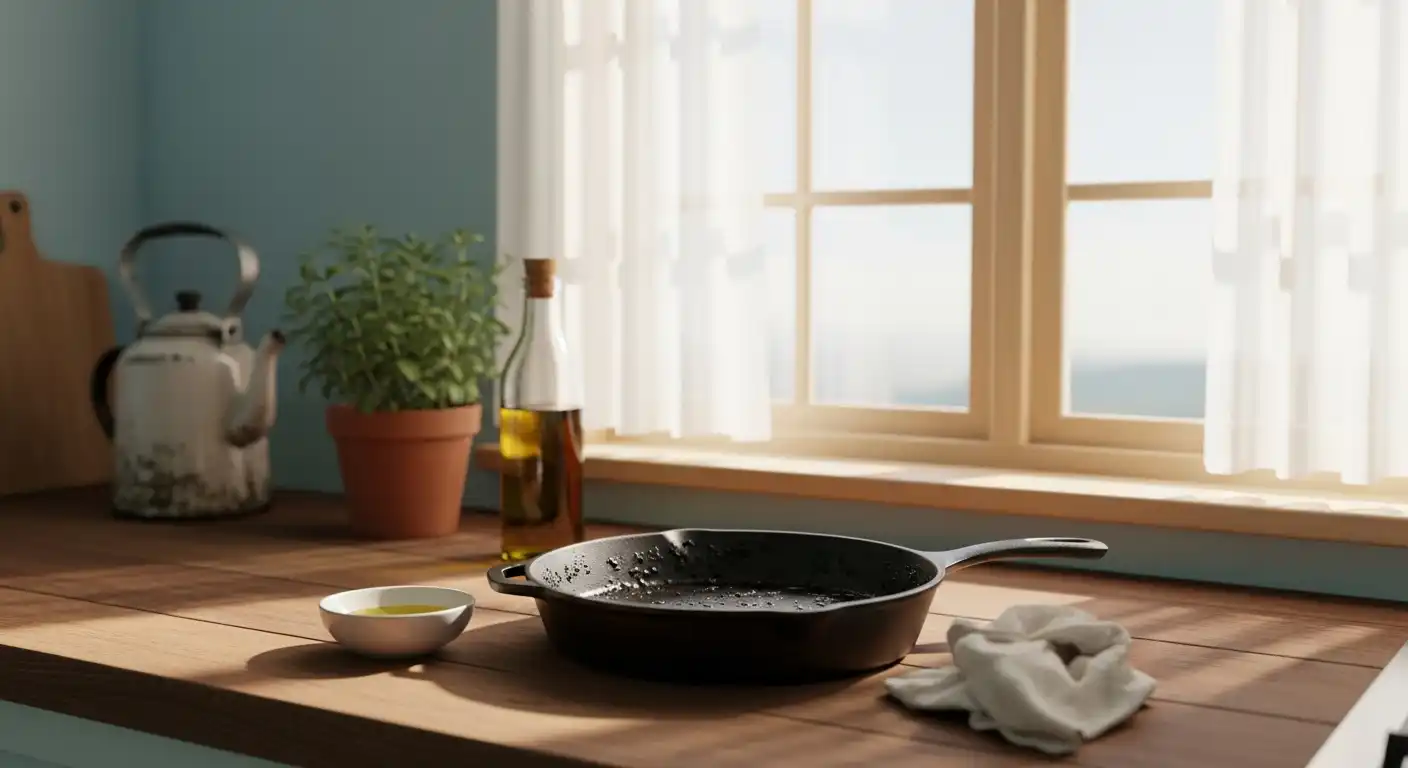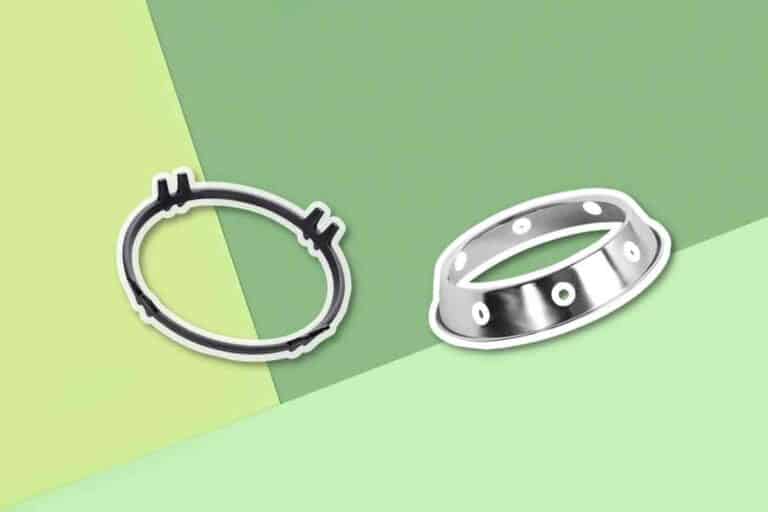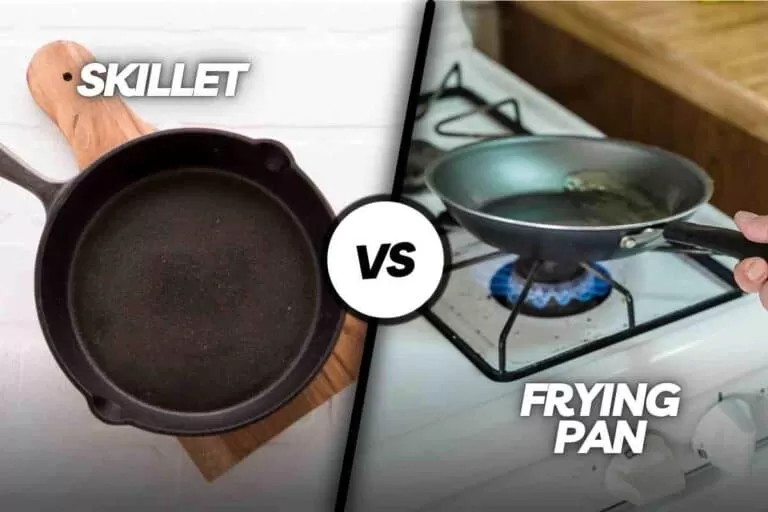Is Black Residue On Cast Iron Skillet Harmful?

Cast iron skillets are beloved for their durability, versatility, and ability to create perfectly seared dishes.
However, many users notice a mysterious black residue on their cast iron skillet after cooking or cleaning.
This can raise concerns: Is black residue on a cast iron skillet harmful? Is it safe to cook with?
In this post, we’ll dive into what this residue is, whether it poses any health risks, and how to manage it effectively.
🎄 Christmas & Year-End Amazon Deals !
Don’t miss out on the best discounts and top-rated products available right now!
*As an Amazon Associate, I earn from qualifying purchases.
What Is the Black Residue on Your Cast Iron Skillet?
The black residue on your cast iron skillet is often a byproduct of the seasoning process or food particles.

Seasoning, a protective layer of polymerized oil, forms when you heat oil on the skillet’s surface. This layer gives cast iron its non-stick properties and prevents rust.
Sometimes, this seasoning can flake off or leave a residue, especially if the skillet is new or not properly maintained.
Burnt food, excess oil, or improper cleaning can also contribute to the residue.
For example, cooking at high temperatures without enough oil can cause food to stick, leaving behind blackened bits.
Understanding the source of the residue is the first step in determining whether it’s harmful.
Let’s explore the potential causes in more detail.
Common Causes of Black Residue
Seasoning Breakdown
When you first use a pre-seasoned cast iron skillet, the initial seasoning layers may not be fully stable. Over time, with proper care, the seasoning strengthens.
However, during early use, small bits of the seasoning may flake off, appearing as black residue.
This is common with skillets like the Lodge Cast Iron Wok, which comes pre-seasoned but may need additional seasoning for optimal performance.
Burnt Food Particles
High-heat cooking, such as searing or frying, can leave behind burnt food particles.
These particles may mix with oil, creating a sticky, black residue.
This is especially true if you’re cooking on an induction cooktop, where precise heat control can sometimes lead to uneven cooking if not monitored.
Improper Cleaning
Using harsh detergents or scrubbing too aggressively can strip the seasoning, leaving black flakes.
🎄 Christmas & Year-End Amazon Deals !
Don’t miss out on the best discounts and top-rated products available right now!
*As an Amazon Associate, I earn from qualifying purchases.
Conversely, not cleaning thoroughly can cause oil and food residue to build up.
For guidance on proper cleaning, check out our post on how to clean a cast iron wok.
Each of these causes is manageable with the right techniques, but the question remains: Is this residue harmful?
Is Black Residue On Cast Iron Skillet Harmful?
The good news is that the black residue on a cast iron skillet is generally not harmful.

If the residue comes from the seasoning layer, it’s simply polymerized oil—essentially baked-on fat that’s safe to ingest in small amounts.
Similarly, burnt food particles, while unappetizing, are not inherently toxic.
However, there are a few caveats. If your skillet is old or poorly maintained, the residue could include rust or other contaminants.
Rust itself isn’t harmful in small quantities, but it can affect the taste of your food and signal that your skillet needs care.
For tips on maintaining older skillets, see our guide on how to tell how old a cast iron skillet is.
In rare cases, residue could come from improper seasoning with low-quality oils or from cooking sprays like Pam, which can leave sticky buildup.
If you’re wondering about using sprays, read our article on can you spray a cast iron skillet with Pam.
When Should You Be Concerned?
While the black residue is usually harmless, there are signs that warrant attention.
🎄 Christmas & Year-End Amazon Deals !
Don’t miss out on the best discounts and top-rated products available right now!
*As an Amazon Associate, I earn from qualifying purchases.
If the residue has a metallic or chemical taste, it could indicate improper seasoning or contamination from cleaning agents. Always avoid using harsh chemicals on your cast iron.
If the residue is gritty or accompanied by red or orange rust, your skillet may need re-seasoning or repair.
Persistent residue that doesn’t come off with gentle cleaning could also point to a damaged seasoning layer.
To avoid these issues, follow proper care routines, such as those outlined in our guide on seasoning a cast iron Dutch oven.
How to Remove Black Residue Safely

If the black residue bothers you, there are safe ways to remove it without damaging your skillet. Here’s a step-by-step guide:
Step 1: Gentle Cleaning
Start by rinsing the skillet with warm water while it’s still warm. Use a soft sponge or cloth to wipe away loose residue.
Avoid dish soap unless absolutely necessary, as it can strip seasoning.
For stubborn residue, create a paste with coarse salt and water. Scrub gently with a sponge, then rinse thoroughly.
This method is effective for cleaning a cast iron skillet used on a glass top stove.
Step 2: Re-Seasoning
If the residue persists, your skillet may need re-seasoning.
Wipe a thin layer of neutral oil (like vegetable or flaxseed oil) over the surface, then bake it at 450°F for an hour.
Repeat this process a few times to rebuild the seasoning layer.
🎄 Christmas & Year-End Amazon Deals !
Don’t miss out on the best discounts and top-rated products available right now!
*As an Amazon Associate, I earn from qualifying purchases.
For detailed instructions, check out our post on how to use a pre-seasoned cast iron skillet for the first time.
Step 3: Regular Maintenance
To prevent residue buildup, always dry your skillet thoroughly after cleaning to avoid rust.
Store it in a dry place, and avoid leaving food in it for extended periods.
For more storage tips, see our guide on how to store food in cast iron cookware.
Tips to Prevent Black Residue

Preventing black residue is easier than dealing with it after the fact. Here are some practical tips:
- Use Enough Oil: When cooking, ensure there’s enough oil to prevent food from sticking. This is especially important when using a cast iron skillet on a Blackstone griddle.
- Control Heat: High heat can burn food and oil, leading to residue. For tips on managing heat, read our post on how to reduce smoke when cooking with cast iron.
- Avoid Cooking Sprays: Sprays like Pam can create sticky residue. Stick to natural oils for seasoning and cooking.
- Clean Promptly: Clean your skillet soon after cooking to prevent food and oil from hardening.
By following these tips, you can keep your cast iron skillet in top condition and minimize residue.
Can Black Residue Affect Cooking Performance?
While black residue is generally harmless, it can affect your skillet’s performance.
A buildup of residue may reduce the non-stick quality of the seasoning, causing food to stick more easily.
It can also create uneven cooking surfaces, leading to inconsistent results.
If you’re noticing performance issues, it might be time to replace or re-season your skillet.
For advice on when to replace your cookware, check out our article on how often to replace a cast iron skillet.
Comparing Cast Iron to Alternatives
If you’re frustrated with residue or maintenance, you might wonder about alternatives to cast iron.
🎄 Christmas & Year-End Amazon Deals !
Don’t miss out on the best discounts and top-rated products available right now!
*As an Amazon Associate, I earn from qualifying purchases.
While cast iron excels in heat retention and durability, materials like stainless steel or enameled cast iron require less upkeep.
For a deeper comparison, see our post on cast iron Dutch oven vs. stainless steel pot.
If you’re considering other cookware, our guide on what can you use instead of a cast iron skillet offers great options.
Final Thoughts on Black Residue
So, is black residue on a cast iron skillet harmful? In most cases, no—it’s just part of the skillet’s seasoning or burnt food particles.
With proper cleaning and maintenance, you can keep your skillet performing at its best.
Regular seasoning, careful cooking, and prompt cleaning are key to a residue-free experience.
Whether you’re cooking on an oven-safe cast iron skillet or experimenting with a cast iron wok, understanding your cookware is the first step to mastering it.
Embrace the quirks of cast iron, and you’ll enjoy its benefits for years to come.






